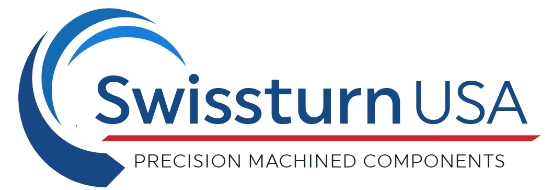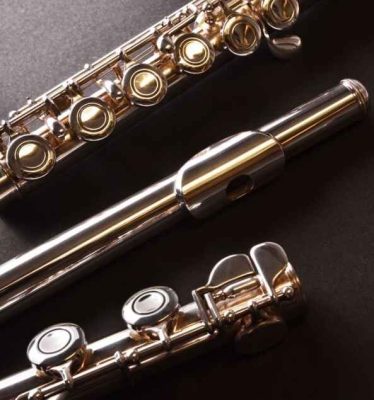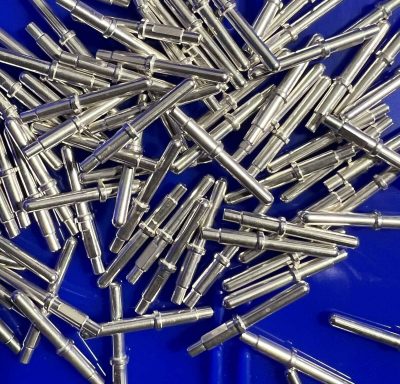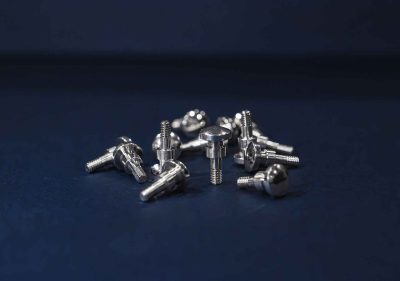FineSilver bar stock is considered a precious metal. It is used in numerous applications ranging from manufacturing medical components and power switch contacts to slip rings to novelty bullets.
Swissturn has years of experience machining silver bar stock to make electrical connectors, musical instrument components, jewelry parts, and other types of components. We have machined Sterling Silver (92.5%) and fine silver (99.9%), which are both vastly different. There are various pros and cons for each of these metals. When machining silver, we take special precautions to ensure that the metal scrap is not contaminated because much of the material cost can be recovered by reselling the silver. Silver is commonly used where good conductivity is required as it has the highest electrical conductivity of any metal, and is also used for appearance and the inherent value of the material. We have machined silver electrical contacts and jewelry. Machining properties are significantly improved using fine silver, which has been cold-worked as much as possible.
What are the main uses of sterling silver?
Sterling silver contains 92.5% silver and is incredibly durable. The rest is copper or some other metal. Its most common use is in making jewelry and silver tableware, where appearance is important – it can add a touch of elegance. Sterling silver can be polished to shine brightly without losing its strength and durability. Silver is used to make mirrors, as it is the best reflector of visible light known, although it does tarnish with time.
Sterling silver is better than silver when designing and wearing jewelry because it’s stronger and can look good for a lifetime. Fine silver jewelry can be damaged easily and is not the best choice to wear on a regular basis. Sterling silver is also better for setting gemstones, making it easy to create intricate designs. Sterling silver is substantially less expensive than fine silver.
What are the main uses of fine silver?
Fine silver is quite soft and does not tarnish. It has a beautiful luster but is not quite as shiny and bright as sterling. Instead, it has a slightly dull and gray appearance. Fine silver is easy to form and highly resistant to tarnish. Fine silver is the purest silver on the market. It is extremely soft and solders easily with minimal tarnishing.
Fine .999 silver is used in some earrings and necklaces. It is highly resistant to tarnish but can be bent, distorted, scratched, dented, and damaged easily.



